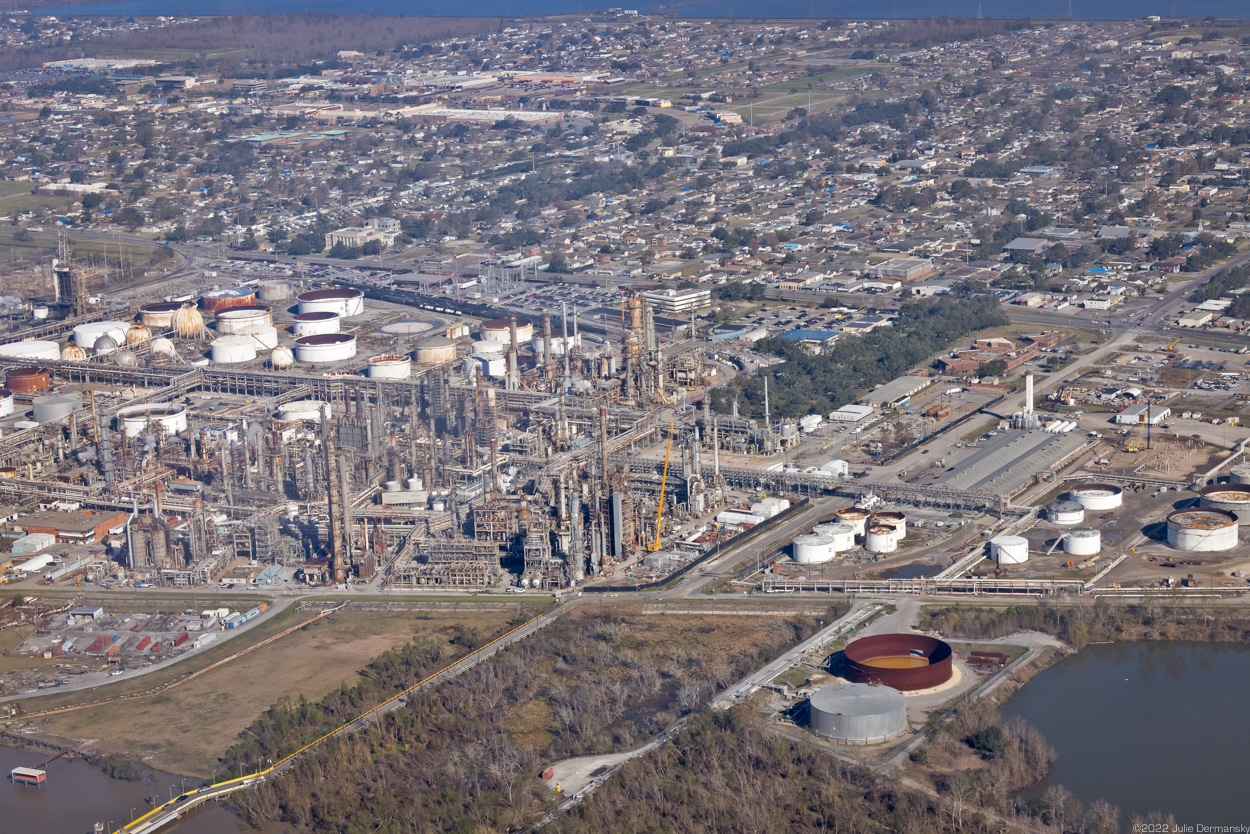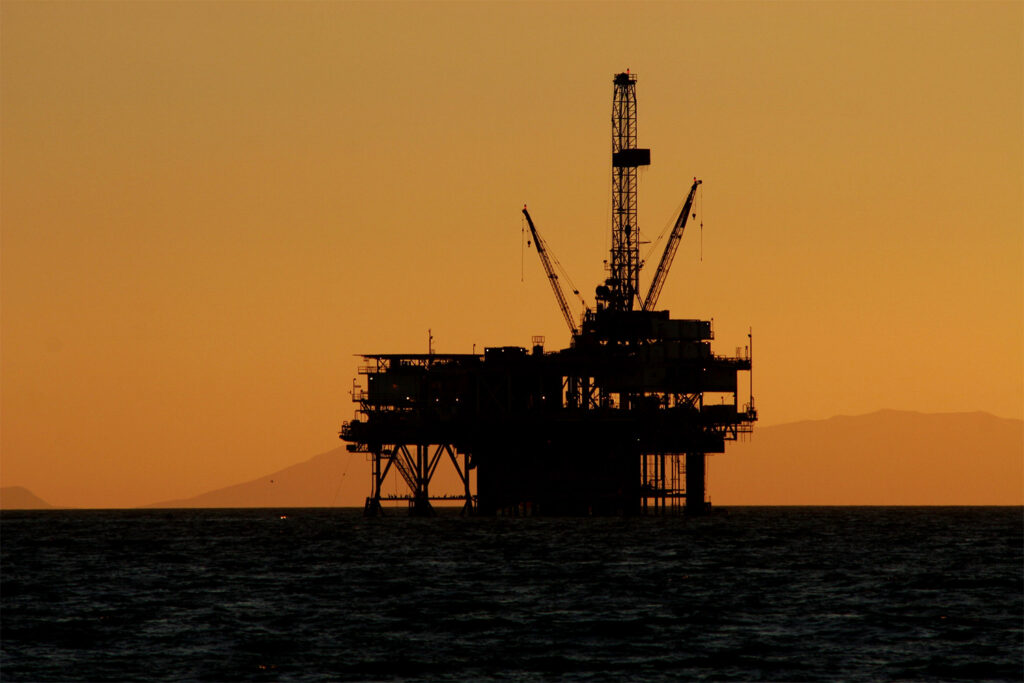A nonprofit advocacy group focused on improving oil and gas pipeline safety is raising concerns about public accountability and transparency in the wake of a major diesel spill in coastal Louisiana after it went unreported to the public for weeks, despite contaminating or killing thousands of fish and dozens of alligators, birds, and other wildlife. The absence of news about the spill prompted the Pipeline Safety Trust to issue a press release on January 11, noting that the spill resulted from a severely corroded pipeline awaiting repair which federal regulators had flagged more than a year earlier.
“I would like the public to know that the system has failed them in this case,” Bill Caram, the trust’s executive director, said by email.
On December 27, 2021, the pipeline, owned by Collins Pipeline Co., ruptured and spilled about 315,000 gallons of diesel fuel into wetlands and ponds a few miles southeast of New Orleans. Just a week earlier, Louisiana state regulators approved a preliminary air permit for a proposed renewable diesel unit at a refinery run by the pipeline firm’s parent company, PBF Energy.
On January 22, I was able to photograph the oil spill site and any lingering cleanup efforts from the air, thanks to a flight provided by the nonprofit conservation group SouthWings. By then, the cleanup was nearly completed. Sheen was still visible on the top of two ponds, where most of the diesel ended up. To date, no photos documenting the scale of the spill or serious impacts to wildlife have been made public.
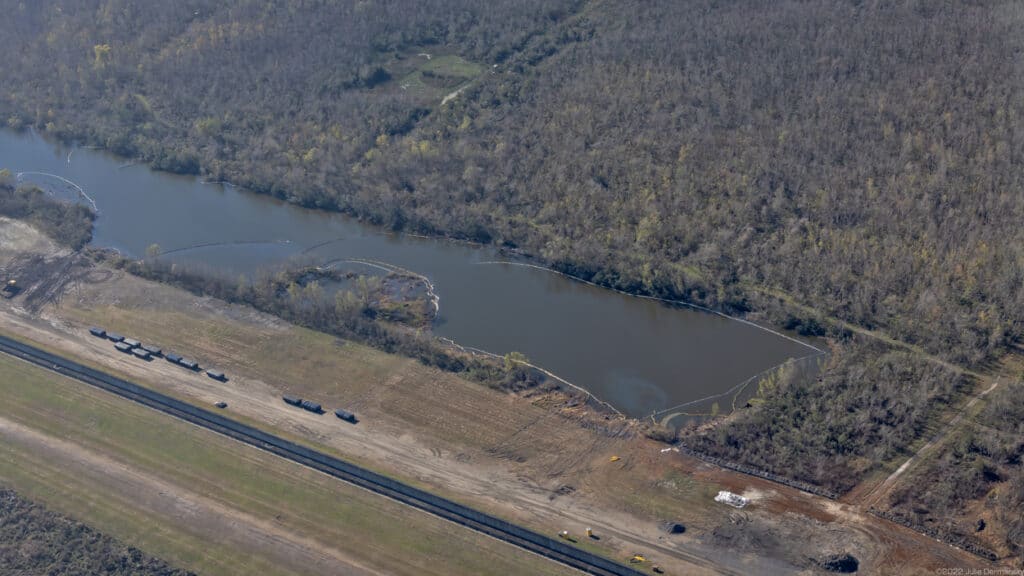
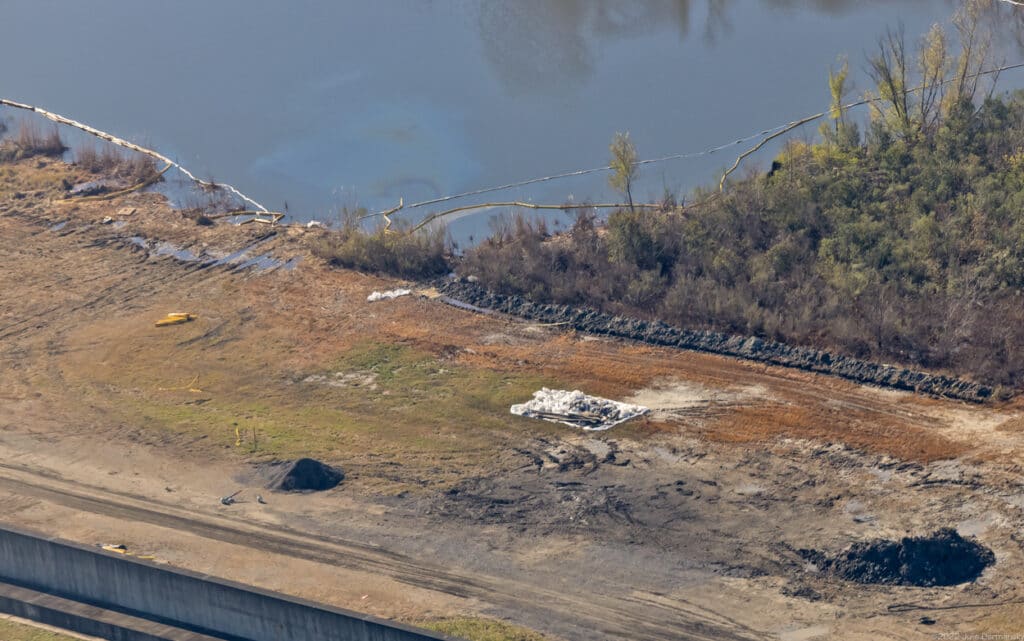
The official incident report filed by Collins — nine hours after shutting off the pipeline — with the U.S. Coast Guard’s National Response Center went unnoticed by the media and other environmental watchdog groups for weeks.
News of the spill was first reported by the Associated Press on January 12, more than two weeks after the spill, the morning after the Pipeline Safety Trust shared its press release. However, state agencies didn’t release any public information until after the media made inquiries. While there is no requirement to notify the public about pipeline spills, this one’s location — close to a critical source of drinking water in the Mississippi River and only a few miles from people’s homes — got Caram’s attention.
He was troubled by the fact that state and federal agencies failed to alert the public in a timely fashion, despite their being informed about the spill the day the pipeline ruptured and coordinating for weeks with the operator on pollution containment and cleanup. He says this lack of transparency diminishes any chance for public accountability and oversight.
Several other aspects about this incident also alarmed Caram.
“First, in October of 2020, the operator discovers a serious corrosion problem on its pipeline, estimated at 75 percent metal loss. That loss is serious enough under PHMSA [Pipeline and Hazardous Materials Safety Administration] regulations to demand immediate repair,” Caram explained. A few months later, “the operator ‘reevaluated’ the data and declared it only a 66 percent metal loss, which gives them 180 days to repair.”
Collins Pipeline applied to PHMSA, the federal agency overseeing pipelines, for a permit to repair the corroded section of pipe, and was reportedly still waiting for it at the time when the pipeline ruptured in late December 2021, over a year after first discovering the problem.
On December 30, 2021, PHMSA issued the company a Corrective Action Order (CAO), which recaps measures taken by Collins once the corrosion of its pipeline was first reported in 2020, including reducing the pressure it was operating at.
Caram questions why the operator was able to run the line at all once it was thought to have lost three-quarters of its thickness. The company was allowed to continue pumping diesel through the pipeline even before it recalculated and downgraded the metal loss, giving it more time to repair the corroded pipe.
“The public has no access to the inspection data and is expected to trust the operator’s evaluation of what the data says about the pipe’s integrity,” Caram wrote to DeSmog. “The operator can look at the data and conveniently reclassify it between categories of need for repair.” This turn of events led him to wonder, “Where is the accountability?”
Despite the ruptured pipeline and subsequent spill, Collins’ failed pipeline wasn’t shut down for long.
“The pipeline has been repaired, pressure tested, and covered with soil. It is back in service,” Gregory Langley, a spokesperson for the Louisiana Department of Environmental Quality (LDEQ), said in a January 24 email. “The cleanup is nearly complete,” he added, with “a section of the damaged pipe … sent off for inspection.”
LDEQ and the Louisiana Department of Wildlife and Fisheries (LDWF) readily answered questions from the media after reporters were tipped off by Pipeline Safety Trust’s press release. Both agencies eventually released photos to the press, though neither made efforts to alert the public or the press about the spill in the first place, including on their websites and social media. In Pipeline Safety Trust’s view, sharing timely information about pipeline spills is in the public interest.
The delay in getting information about the spill deprived the media — and the public — of the chance to document the spill at its worst. By January 12 when the news spread, the worst impacts from the spilled diesel fuel had already been cleaned up. Though the spill site and the facility where the animal rehabilitation took place were off limits since they are on private property, aerial photography of the spill site was still possible.
The two photos released by the LDEQ to the AP are not dated, and fail to give a sense of the 300,000-plus gallon spill’s magnitude. And the photos released by LDWF all appear to have been taken over two weeks after the incident occurred.
A January 20 press release from LDWF offers photos of the spill and a couple of video clips that show alligators being captured, cleaned, and released but do not include any of the worst affected or dead animals.
DeSmog inquired if LDWF had photos of animals badly impacted by the spill it could provide. Edward Pratt, Press Secretary for LDWF, wrote in an email that he would check, but no such images were provided.
Laura Carver, LDWF oil spill response and natural resource damage assessment coordinator, wrote that it is the government’s job “to ensure that all evidence, (live and dead wildlife) is collected following established enforcement protocols to ensure that any case that is brought against a responsible party on a federal or state level has legally defensible evidence supporting the claim. All dead animals collected during an oil spill response are considered evidence and they are tracked under the chain-of-custody and kept in a secure locked freezer within a secure locked facility.”
According to the agency’s press release, 169 live animals were documented and captured for rehabilitation and 63 released, including 38 alligators. The agency’s tally of dead wildlife was 2,523 fish and 96 animals.
One of the videos released by LDWF features a representative from the Texas-based company hired to rehabilitate animals for this spill. Rhonda Murgatroyd of Wildlife Response Service LLC discusses the company’s process, from removing the animals from the spill site to releasing them, cleaned and medically cleared, in areas nearby. The video ends with her exclaiming: “This is the good part of the spill. Releasing the cleaned animals back into natural habitat is always the good story. It is the story that I believe that the public needs to see — the good side and not all the bad.”
How the previously oiled animals fare after they are released is another question. A 2016 article by the coastal news publication Hakai Magazine documented the scant success stories for wildlife after oil spills and their cleanup, noting that “cleaning oily birds is a risky business, and the marine oil spill cleanup can often do more harm than good.”
Though metal leg bands were put on affected birds before release for identification, no tracking is being done on any of the animals released following rehabilitation, according to LDWF’s Carver.
The majority of the rehabbed animals from this spill were American Alligators. In an email, Carver wrote that they do not expect the gators’ estimated life expectancy of 30-50 years to go down following the diesel exposure and the rehab.
From Diesel Spill to a Renewable Diesel Project
On December 21, 2021, just a week before the diesel spill, LDEQ granted PBF, the parent company of Collins Pipeline, an expedited air quality permit for a proposed renewable diesel plant. That project would be built at PBF’s Chalmette refinery in the suburb of Chalmette, in St. Bernard Parish, just five miles from the pipeline spill site.
PBF’s proposed project would produce biodiesel from renewable feedstocks that could include soybean oil, distillers corn oil, and other biogenically-derived fats and oils. However, the proposed operation is not designed to have net-zero greenhouse gas emissions and would release a number of other pollutants, ranging from soot to carcinogens such as benzene, that would further degrade the area’s already poor air quality.
After reviewing PBF’s permit application, environmental scientist and community advocate Wilma Subra wrote by email that, if fully permitted, “the increase in air emissions in the area will be severe.”
Last November, LDEQ held a public hearing about the permit after a request from the Concerned Citizens in St. Bernard Parish, a local grassroots organization. The group raised concerns about the new plant’s close proximity to the fenceline community across the street from the refinery grounds.
Polluted air is not a new issue for residents in St. Bernard Parish and neighborhoods in New Orleans on the other side of the parish line. The parish is at the far end of an 85-mile-long stretch of the Mississippi River known as Cancer Alley due to toxic emissions released from over a hundred petrochemical plants and refineries.
A 2020 report by the Environmental Integrity Project, a nonprofit group of former EPA enforcement attorneys, public interest lawyers, and community organizers, ranked the PBF’s Chalmette refinery eighth in the nation for its levels of cancer-causing benzene emissions. The report led to community advocates calling on federal regulators to expand air pollution monitoring at refineries.
The November hearing was sparsely attended and received no coverage by the local or national press — a trend that continued when LDEQ granted PBF’s requested permit, just a week before its subsidiary’s pipeline ruptured not far from the refinery.
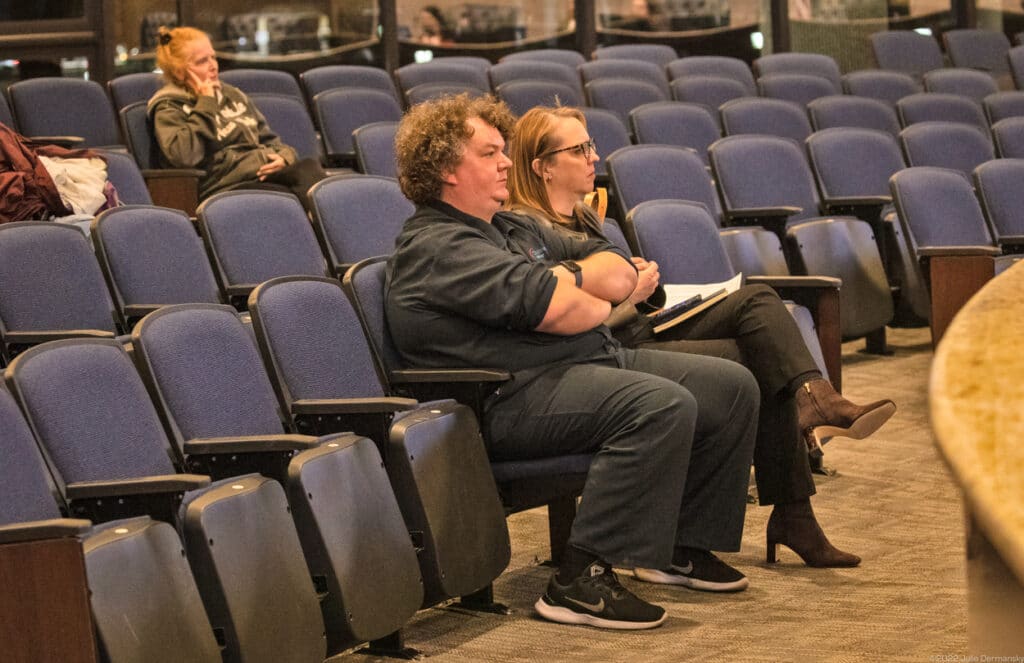
At the start of the hearing, Chris Carrington, environmental manager at PBF’s Chalmette refinery, went over reasons why the company believed LDEQ should grant the permit. No elected officials were present, and no one else spoke in favor of it other than Carrington.
His presentation was followed by about a dozen citizens concerned about air quality, all speaking vehemently against the project. Opposition came from residents near the plant, as well as Louisiana-based environmental advocates citing the project’s impact on an environmental justice community and perceived flaws with the permit application and the project’s Environmental Assessment Statement.
In addition, objections claimed LDEQ isn’t taking into account the cumulative impacts of all of PBF’s facilities in the region and a number of other industrial facilities nearby.
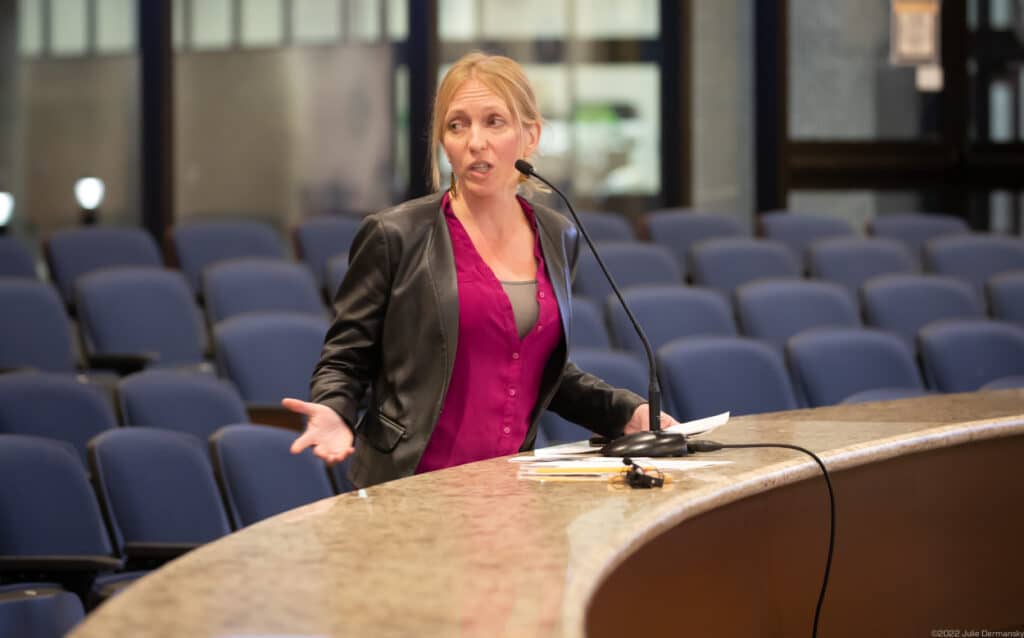
“Releasing significant amounts of harmful and toxic air pollutants in order to manufacture quote ‘renewable energy’ is short-sighted and counterproductive to the public welfare,” testified Kimberly Terrell, speaking on behalf of Clean Air, a New Orleans community-based organization fighting for better air quality.
“While we support a transition to more sustainable fuels, projects that claim suitability while increasing toxic emissions are short-sighted and self-contradictory,” she concluded.
Terrell and others at the hearing questioned LDEQ’s process for informing the public about this and other permit hearings. Terrell suggested that if more community members knew about the potential environmental impacts from PBF’s proposed project in an area already known for air pollution, more might have attended the meeting.
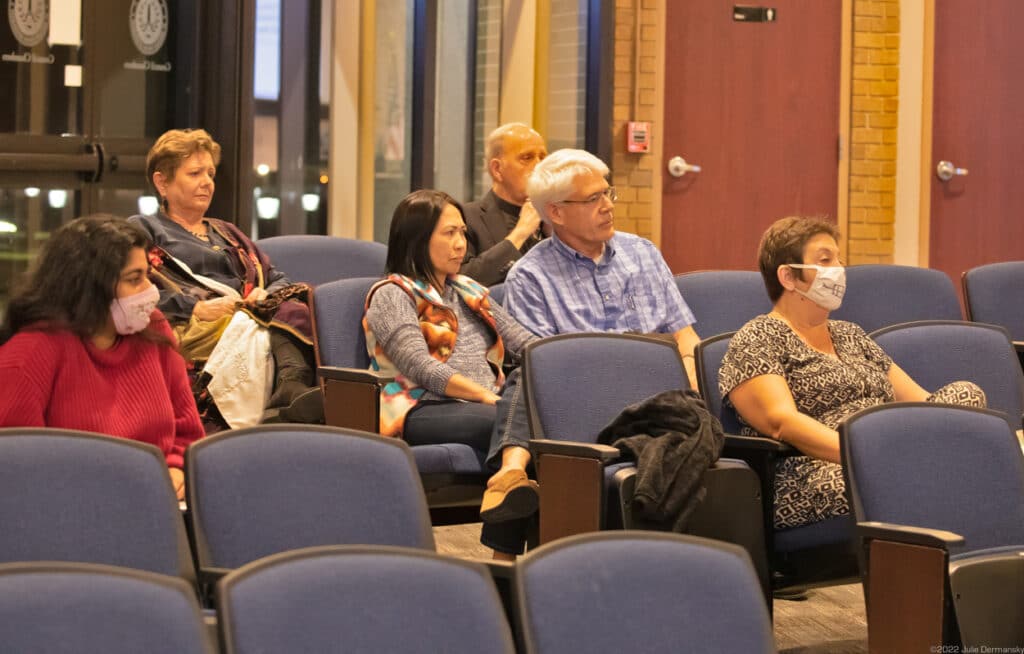
A couple weeks before LDEQ granted PBF its permit, the U.S. Environmental Protection Agency (EPA) published findings that Chalmette’s air failed to meet national air quality standards for sulfur dioxide (SO2) by a target date in 2018. While PBF is not responsible for the majority of the area’s SO2 emissions, it contributes to them.
Neither PBF or Collins Pipeline responded to questions about the diesel fuel spill. And PBF did not respond to DeSmog’s request for a comment about community members’ concerns about air pollution from its new project or whether the company considered designing it to have net-zero emissions.
On January 31, Louisiana Governor John Bel Edwards’ Climate Initiatives Task Force released a state climate action plan with a net-zero greenhouse gas emissions by 2050 goal. However, Edwards’ administration continues to support proposed projects like PBF’s renewable diesel plant that would contribute even more climate pollution to the state’s already high emissions.
Subscribe to our newsletter
Stay up to date with DeSmog news and alerts


